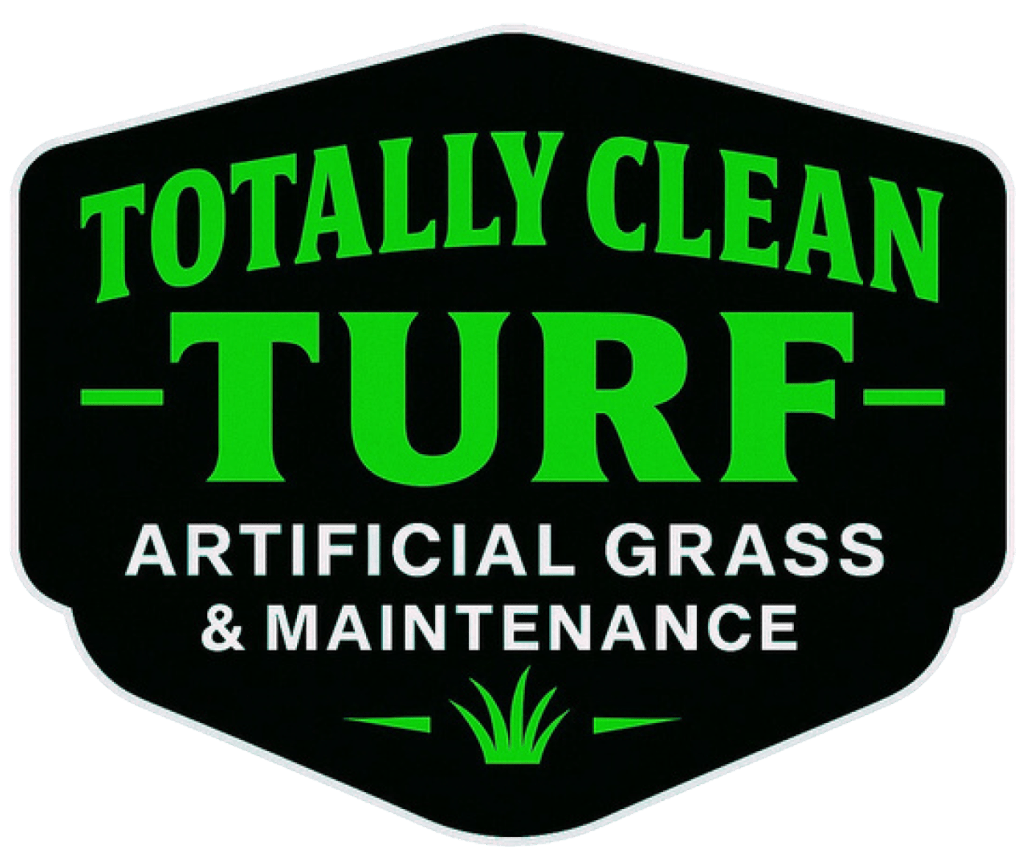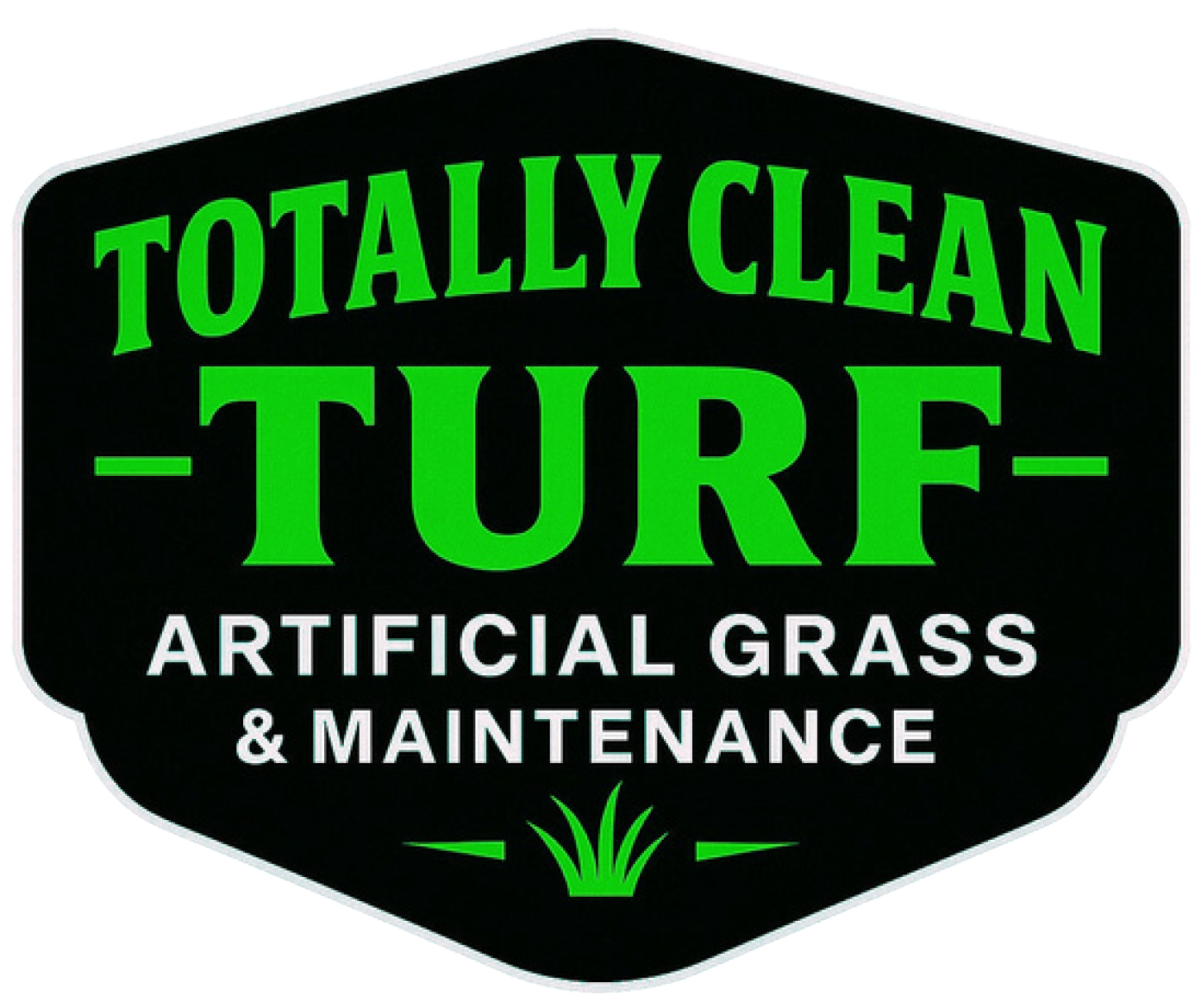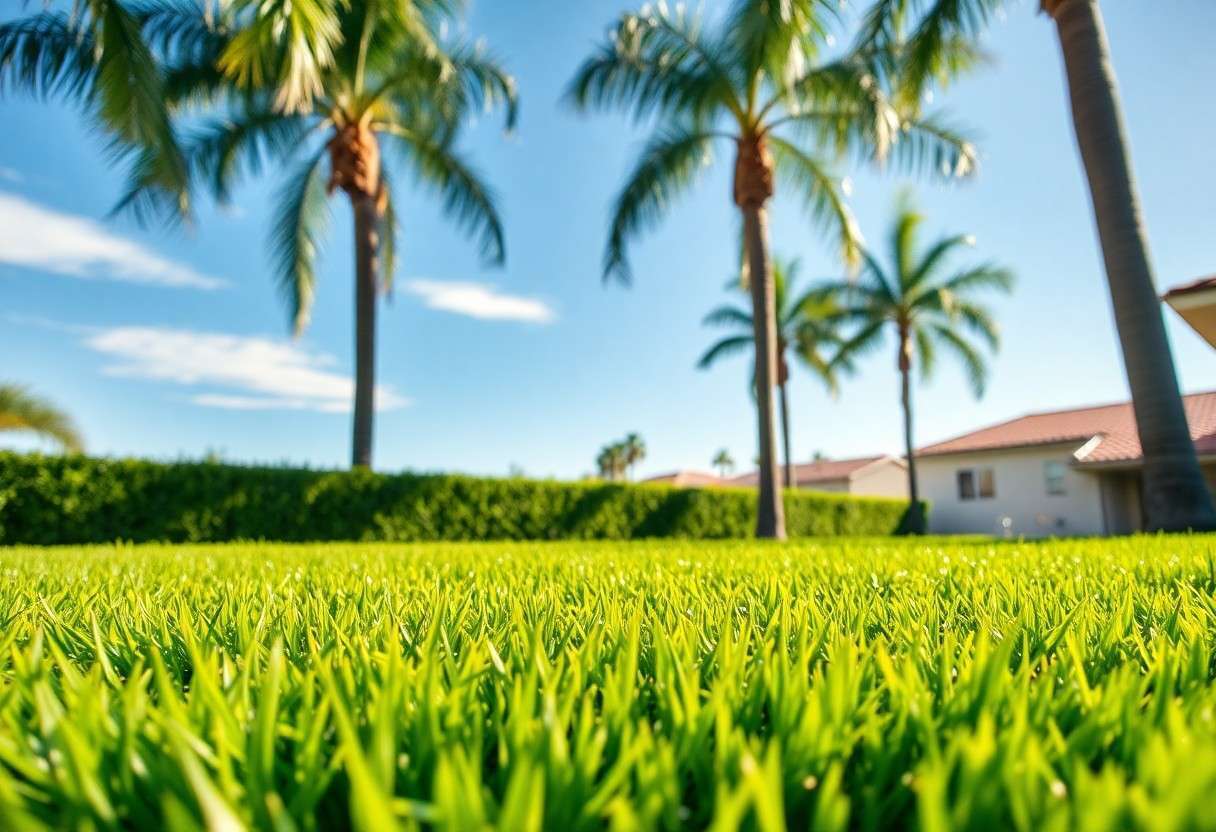Over time, you might wonder how durable artificial grass is in Southern California’s unique climate. Understanding the lifespan of synthetic turf can help you make informed decisions about your landscaping investment. Factors like quality of materials, installation, and ongoing maintenance play significant roles in how long your artificial grass will stay lush and functional. In this post, you’ll learn what to expect regarding durability and tips to maximize the life of your turf in sunny, dry environments typical of Southern California.
Key Takeaways:
- Artificial grass in Southern California typically lasts between 15 to 20 years with proper installation and regular maintenance.
- Exposure to intense sun and heat in the region can cause gradual wear, but using high-quality turf and professional upkeep like turf decompaction and blooming can extend its lifespan.
- Routine turf maintenance services such as cleaning, odor removal, and sanitizing help preserve the turf’s appearance and functionality, especially in pet and family-use areas.
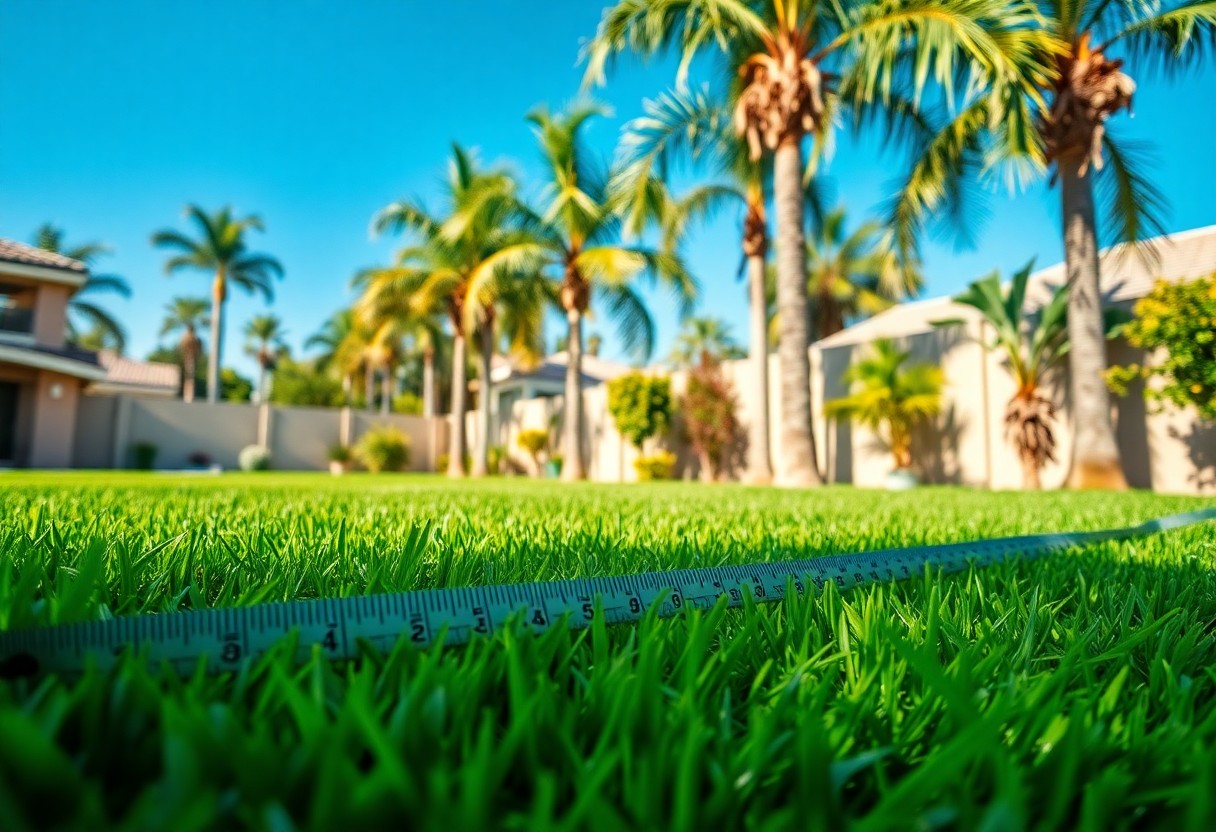
The Lifespan of Artificial Grass: What to Expect
Your artificial grass can maintain its vibrant, lush appearance for 15 to 20 years with proper installation and upkeep. Manufactured from durable materials like polyethylene and polypropylene, quality turf resists fading and wear even under Southern California’s strong sun and frequent use. Expect consistent performance when paired with routine maintenance like turf decompaction and blooming, which restore softness and fullness over time. After continuous care, your synthetic lawn remains a cost-effective, water-saving landscaping solution that outlasts many natural grass alternatives.
Factors Influencing Durability
Several elements affect how long your artificial grass stays in top shape:
- Material quality and pile density—higher grade fibers mean better resilience.
- Installation technique—a well-prepared base prevents shifting and damage.
- Climate exposure—UV-treated turf withstands Southern California’s intense sun.
- Foot traffic and pet activity—heavy use requires more frequent maintenance.
- Maintenance routines like turf decompaction, blooming, and odor removal.
After addressing these factors with expert care, you’ll maximize your turf’s durability and visual appeal.
Average Lifespan in Southern California Conditions
Artificial grass installed in Southern California typically lasts around 15 to 20 years, depending on maintenance and environment. The region’s dry climate reduces moisture-related issues common elsewhere, helping turf fibers stay intact without mold or mildew. UV-resistant materials prevent premature fading despite relentless sunshine. When combined with regular turf cleaning and sanitizing—services offered by local experts like Totally Clean Turf—your synthetic lawn performs reliably for nearly two decades.
Southern California’s combination of sun, heat, and low humidity actually works in favor of synthetic turf longevity compared to damper regions. However, intense UV exposure can still degrade fibers if they lack proper UV stabilization, a factor Totally Clean Turf accounts for by selecting premium, UV-treated products. Routine maintenance focuses on debris removal and turf blooming to combat compression from daily use, especially in pet areas and playgrounds. After consistent care, your installation remains a vibrant, comfortable space for family and pets for many years.
Maintenance Matters: How to Maximize Longevity
Your artificial grass can maintain its lush appearance and performance for many years when you prioritize ongoing care. Simple maintenance like regular debris removal, professional turf decompaction, and occasional turf blooming can prevent wear from high-traffic and harsh sun exposure typical in Southern California. Incorporating pet-specific odor removal and turf sanitizing treatments also preserves freshness and safety, especially for families and pet owners. These targeted services, offered by experts like Totally Clean Turf, help you extend your investment’s lifespan beyond the typical 15-20 years.
Routine Care for Longer Life
Keeping your artificial turf free from leaves, dirt, and organic debris with routine cleaning preserves drainage and prevents mold buildup. Brushing your turf fibers weekly helps restore their upright position, enhancing both look and feel. Scheduling annual turf decompaction relieves soil compression, improving softness and water runoff. For pet owners, addressing odors with specialized treatments prevents staining and lingering smells. Consistent maintenance tailored to Southern California’s climate ensures your lawn stays vibrant and functional throughout every season.
Common Mistakes That Shorten Lifespan
Allowing debris to accumulate over time, neglecting fiber upkeep, and skipping professional turf cleaning are common missteps that wear down artificial grass prematurely. Heavy-use areas left uncompacted develop drainage issues and fiber matting. Using improper equipment or harsh chemicals during cleaning can damage turf fibers, reducing their durability and aesthetic. Ignoring pet odor treatments leads to organic buildup, which can degrade infill materials and invite bacteria, cutting your turf’s effective lifespan substantially.
Many turf owners underestimate the cumulative effect of small neglectful habits. For example, letting leaves and dirt build up blocks drainage systems, causing water pooling that promotes mold. Without regular brushing and turf blooming, fibers eventually flatten and lose resilience, which speeds wear in high-traffic zones. Inappropriate cleaning methods—such as power washing with excessive pressure or harsh bleach—can break down the polyethylene blades. Combining these factors with unmanaged pet waste odors accelerates both visual and structural breakdowns. Partnering with maintenance professionals like Totally Clean Turf ensures these issues are identified early and addressed with industry-approved solutions, maximizing longevity.
The Role of Climate: Southern California’s Impact on Artificial Grass
Southern California’s arid climate, characterized by long, dry summers and mild winters, generally favors artificial grass longevity by eliminating issues like mold and excessive moisture damage. However, intense sun exposure and seasonal temperature swings can stress synthetic turf fibers and infill materials. Despite less rainfall, regular maintenance such as turf blooming and decompaction remains imperative to counteract natural wear caused by heat and dust accumulation. Your artificial lawn benefits from these practices, ensuring it stays lush and functional even under Southern California’s demanding environmental conditions.
Heat Considerations: How Extreme Temperatures Affect Turf
Extreme heat spikes, often reaching above 100°F in the Coachella Valley and desert cities, cause synthetic turf temperatures to soar beyond ambient air levels, sometimes by 30-50 degrees. High surface heat can accelerate fiber degradation, leading to brittleness and color fading over time. You can mitigate these effects by selecting UV-stabilized turf fibers and applying turf cooling treatments or shading areas to preserve softness and prevent premature wear.
| Impact | Result |
| Surface temperatures exceeding 130°F | Fiber brittleness and faster material breakdown |
| Prolonged sun exposure | Color fading and reduced turf lifespan |
| High dryness and dust accumulation | Infill compaction requiring regular maintenance |
| Heat-induced expansion | Potential turf shifting without proper installation |
UV Resistance and Its Importance
Artificial grass with robust UV resistance stands up better against Southern California’s intense solar radiation, protecting turf fibers from fading and structural weakening. Products incorporating UV inhibitors maintain vibrant color for years, enabling your lawn to retain a natural look despite daily exposure to ultraviolet rays. UV resistance directly influences the overall lifespan and appearance of your synthetic turf.
UV resistance extends beyond mere aesthetics—it preserves the integrity of turf fibers, preventing brittleness that leads to cracking and shedding. Turf lacking adequate UV stabilization can degrade within 5 to 7 years instead of lasting the typical 15 years. Manufacturers often test UV-resistant turf fibers for protection against discoloration exceeding 5,000 hours under accelerated sun exposure conditions. Choosing high-quality UV-stabilized materials paired with regular maintenance like turf blooming ensures your artificial lawn endures Southern California’s harsh sun while looking fresh and vibrant season after season.
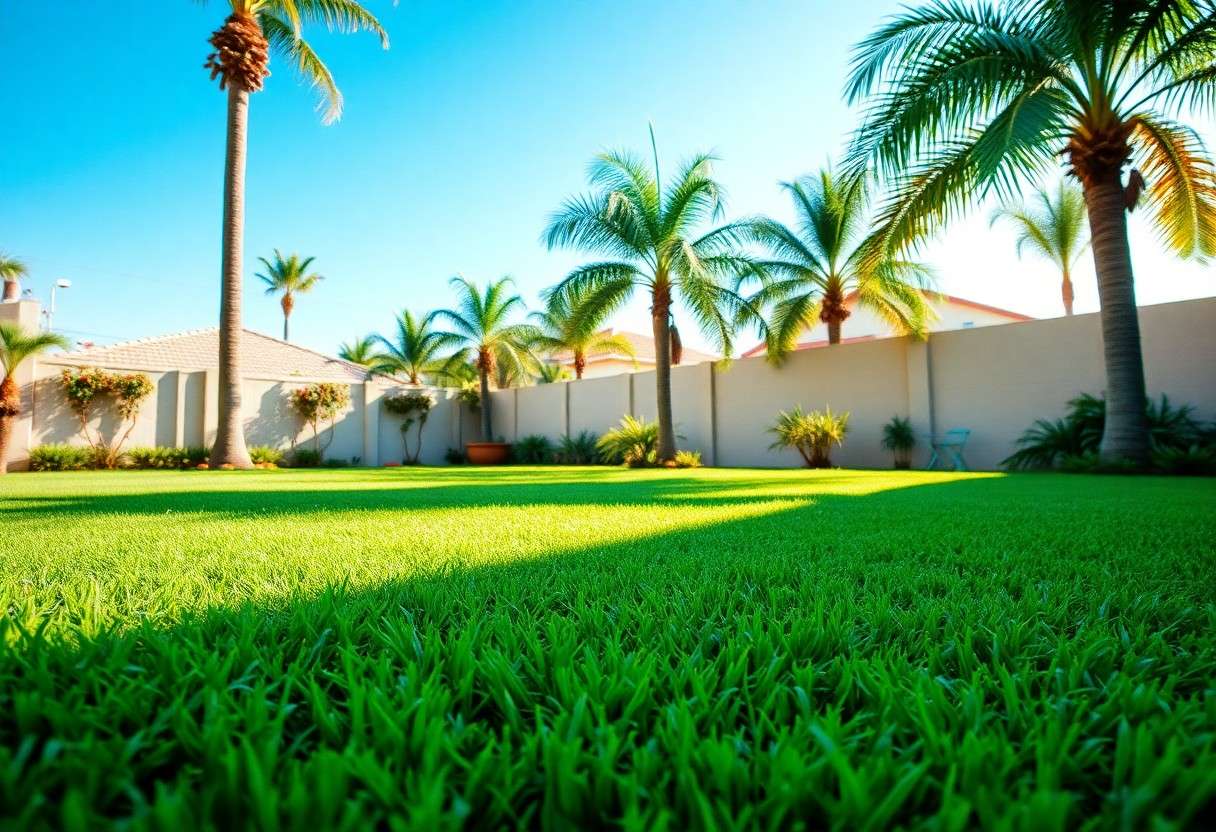
Choosing the Right Quality: Investing Wisely in Synthetic Turf
Opting for premium synthetic turf means selecting fibers engineered for durability, color retention, and comfort underfoot. High-quality turf maintains its vibrant green shade without fading for 10 to 15 years, even under Southern California’s intense sun. You’ll gain a low-maintenance lawn that withstands heavy foot traffic, pet activity, and frequent use. Balancing upfront investment against long-term performance ensures you get the best value, avoiding premature replacement and costly repairs.
What Separates High-Quality Turf from Low-End Options
Top-tier artificial grass uses polyethylene fibers that mimic natural blade softness and include UV inhibitors to prevent fading. In contrast, cheaper turf often features stiff, less resilient materials prone to matting and quick degradation. High-quality turf also boasts superior drainage backing, enhancing water runoff and preventing odor buildup—important if you have pets. Low-end products may look acceptable at first but degrade noticeably within a few years, impacting aesthetics and usability.
Benefits of Professional Installation and Maintenance
You gain extended turf lifespan and appearance when installation is handled by experts who ensure proper base preparation, drainage setup, and seamless seaming. Professionals tailor maintenance routines like turf decompaction and blossoming to restore fiber resilience and prevent wear patterns. Their odor removal and sanitizing services maintain freshness, especially with pets or children using the area. This level of care keeps your investment looking and performing at its best for years.
Professional installation involves compacting and grading a base layer that prevents settling or unevenness, critical in Southern California’s climate shifts. Technicians use specialized tools for precision cutting and securing turf edges, eliminating wrinkles and loose spots. Regular maintenance services go beyond basic cleaning; turf decompaction breaks up compressed areas to maintain softness and drainage, while turf blooming re-fluffs matted fibers for a vibrant look. In pet zones, odor neutralization treatments remove lingering smells, and sanitizing applications ensure a safe surface, reducing bacteria growth. These services collectively protect your synthetic lawn from premature aging, preserving its aesthetic appeal and functional benefits over a decade or more.
Real-Life Experiences: Insights from Southern California Residents
Southern California residents frequently share how artificial grass has transformed their outdoor spaces, balancing aesthetics and practicality. Many report enjoying lush, green lawns all year without worrying about water restrictions or constant upkeep. Pet owners especially appreciate turf odor removal and sanitizing services that keep their yards fresh. Some note challenges like high-traffic turf decompaction needs, handled effectively through professional maintenance. These firsthand experiences highlight both the benefits and maintenance realities you can expect in this region’s unique climate.
Homeowners’ Stories: Successes and Challenges
You’ll hear homeowners praising the instant curb appeal synthetic turf provides, especially in drought-prone areas like Riverside and San Bernardino counties. One Cherry Valley resident shared how their backyard now welcomes playtime with minimal mess, thanks to turf sanitizing and odor removal by local pros. On the flip side, some have encountered fiber flattening in shaded areas, which turf blooming treatments quickly reverse, ensuring that plush, natural look endures through every season.
Commercial Perspectives: How Businesses Benefit from Artificial Grass
Many businesses across Los Angeles and Orange County choose artificial grass to boost curb appeal while cutting water costs. Commercial properties, like office parks and retail centers, find synthetic turf an ideal solution for low-maintenance landscaping that remains vibrant without grass mowing or irrigation headaches. Regular turf maintenance services ensure high-traffic zones stay soft and inviting, enhancing customer and employee experiences alike.
For business owners, artificial grass installation offers a cost-effective alternative that supports eco-conscious branding and operational savings. Facilities in Palm Springs and the Coachella Valley have reported up to 50% reduction in landscaping expenses following turf installation. Furthermore, integrating custom paver designs with turf creates attractive, durable outdoor environments perfect for client engagement and staff relaxation. Ongoing turf blooming and decompaction services keep these commercial spaces looking fresh, making your investment last well beyond a decade.
To wrap up
Presently, artificial grass in Southern California can last between 15 to 25 years when properly installed and maintained. With your climate’s abundant sunshine, UV-resistant turf and regular upkeep like turf decompaction and cleaning are necessary to ensure longevity. By investing in quality materials and scheduled maintenance, you can enjoy a vibrant, low-maintenance lawn that withstands wear, pet activity, and weather conditions over time.
FAQ
Q: How long can I expect artificial grass to last in Southern California?
A: Artificial grass installed in Southern California typically lasts between 15 to 20 years. The region’s dry climate helps reduce wear caused by moisture and extreme weather, while high-quality synthetic turf and professional installation further extend its lifespan. Regular maintenance such as turf decompaction and cleaning also ensures that the grass stays in great condition over the years.
Q: What factors affect the longevity of artificial grass in this area?
A: Several factors impact how long artificial grass lasts including the quality of the turf material, installation technique, and maintenance routine. Exposure to strong sunlight can cause some fading over time, but UV-protected turf helps minimize this effect. Additionally, high foot traffic areas benefit from turf blooming and decompaction services to maintain softness and appearance, which contribute to overall durability.
Q: How does maintenance influence the durability of artificial turf in Southern California?
A: Proper maintenance significantly enhances the lifespan of artificial turf. Regular services such as debris removal, odor removal for pet areas, and turf sanitizing prevent buildup that can degrade the surface. Turf blooming lifts flattened fibers, keeping the grass looking lush, while turf decompaction improves drainage and softness, all helping to preserve the visual appeal and functionality of artificial grass in the Southern California environment.
